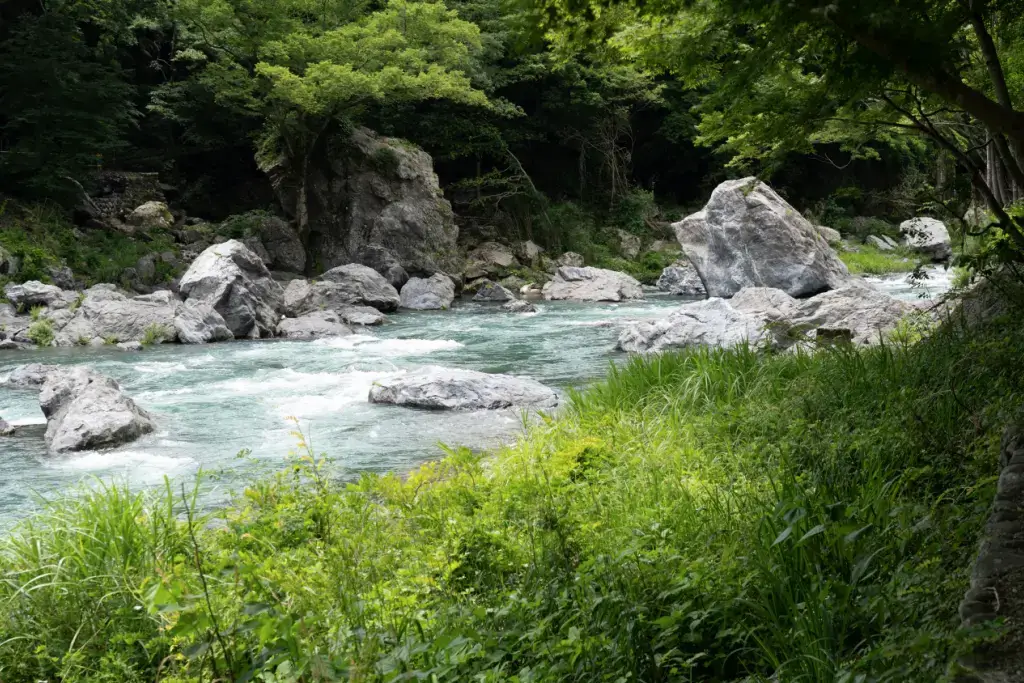The Tama Region is a beautiful mixture of nature and history located in western Tokyo. From beautiful parks to well-preserved shrines and refreshing hot springs, it is the perfect destination for tourists who want to leave the noise and traffic of Tokyo’s city center. We’ve compiled a list of five exciting places within this region for our readers to visit.
Table of Contents
ToggleInokashira Park (Kichijōji)
This park opened in 1917 and is considered a gift from the Emperor to the public. It is located by Inokashira Pond and also features many cherry and plum trees, making it a popular destination for hanami (flower viewing). Several festivals are held yearly, including Golden Week’s Kichijōji Music Festival and the Kichijōji Anime Wonderland in October.

Inokashira Park is also home to a shrine dedicated to the goddess Benzaiten, a small zoo, and swan boats on the pond. (It is said that couples riding together will break up soon afterward.) Additionally, families with small children can visit the nearby Ghibli Museum.
Access: Inokashira-Koen Station (a one-minute walk) or Kichijōji Station (a five-minute walk)
Admission: Free
Hours: 24/7
Edo-Tokyo Open Air Architectural Museum (Koganei)
Historically-minded tourists should visit the Edo-Tokyo Open Air Architectural Museum. It opened in 1993 to preserve Edo period and Meiji era buildings from natural disasters and socioeconomic changes. Reconstructed buildings include farmhouses, stores, and a mausoleum. Moreover, the former Musashino Folklore Museum holds special exhibitions. There is also a library, a restaurant, two cafés, and a gift shop.

Access: Five to ten minutes by bus from Musashi-Koganei, Higashi-Koganei, and Hana-Koganei Stations
Admission: 400 JPY ($3 USD)
Hours: Open every day except Monday (or Tuesday, if Monday is a national holiday). 9:30 am to 5:30 pm from April to September and 9:30 am to 4:30 pm from October to March
Are you looking for some amazing Japanese snacks? Check out Sakuraco! Sakuraco delivers traditional Japanese snacks, teas, sweets, and snacks from local Japanese makers directly to your door so you can enjoy the latest treats from Japan!
Tanashi Shrine (Nishi-Tokyo)
Considered one of Japan’s most sacred sites, this Kamakura period shrine is said to house five dragons: the Golden Dragon (main hall) and the red, white, black, and blue dragons in the four compass directions. It was initially located in Kitayato before moving to its present site in the 17th century. Tanashi Shrine also holds various festivals, the most famous of which is the Dragon God Festival (September 19th). Since 2024 is the Year of the Dragon, this year’s festival will be especially auspicious and busy. Tanashi Shrine’s Saitan Festival for New Year’s Day is also worth attending. Plan your visit accordingly!

Access: A six-minute walk from Tanashi Station
Admission: Free
Hours: 24/7
Tama Lake Cycling Road (Musashino)
Cycling enthusiasts are strongly encouraged to try Tama Lake Cycling Road. At 22 kilometers (14 miles) long, it is a long yet scenic ride around the artificial Tama Lake. Consisting of two main routes, the road passes by or through landmarks such as Seibu Amusement Park, Tamako Dam, and Sayama Park. Tama Lake Cycling Road is a mixed bike and pedestrian path perfect for bikers of all abilities. Due to its length, we recommend that beginners try the Cycling Road in increments. There are also train stations, bus stops, cafés, and shops if cyclists need to rest.

Access: Musashi-Yamato Station
Admission: Free
Hours: 24/7
The University of Tokyo Tanashi Forest (Nishi-Tokyo)
Tanashi Forest is located near the University of Tokyo’s Hongo campus. First opened in 1929 and managed under the Laboratory of Silviculture, it changed hands several times before coming under UTokyo’s Graduate School of Agricultural and Life Sciences in 2000. While primarily a research site and field school, Tanashi Forest is open to the public for tours and special activities several days a week and on certain holidays. In addition to the trails, there is a Farm Museum and an ornamental lotus garden.

Access: Disembark at Rokkaku Jizosonmae bus stop or walk five minutes from Kitahara 2-chome or Oyado bus stops.
Admission: Free
Hours: Tuesdays to Fridays from 9:00 am to 4:30 pm (pre-booking required)
Why should I visit these places in the Tama Region?
You should visit these places because they represent the Tama Region’s ever-changing and beautiful landscape, from Tanashi Forest’s impressive trees and Inokashira Park’s pristine pond to the winding Lake Tama Cycling Road. Meanwhile, Tanashi Shrine and the Edo-Tokyo Open Air Architectural Museum showcase unique aspects of Japanese culture. The shrine is still used for ceremonies today, while the museum shares artifacts and stories to keep the past alive.

Finally, visitors can enjoy all five places at their own pace with little to no cost, compared to other tourist attractions. They are meaningful destinations that will leave people with excellent, long-lasting memories. Have you visited any of these places in the Tama Region? Share your experience in the comments.











